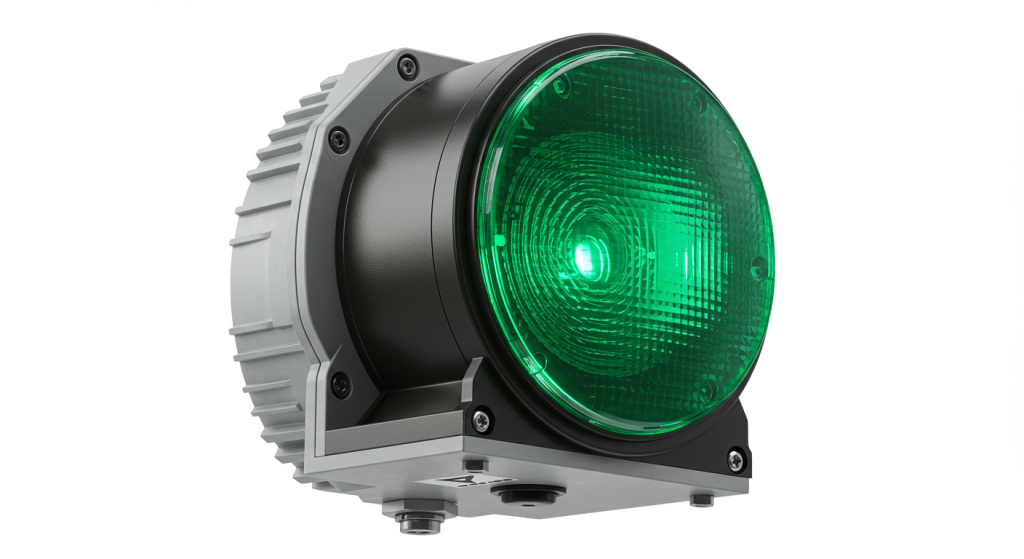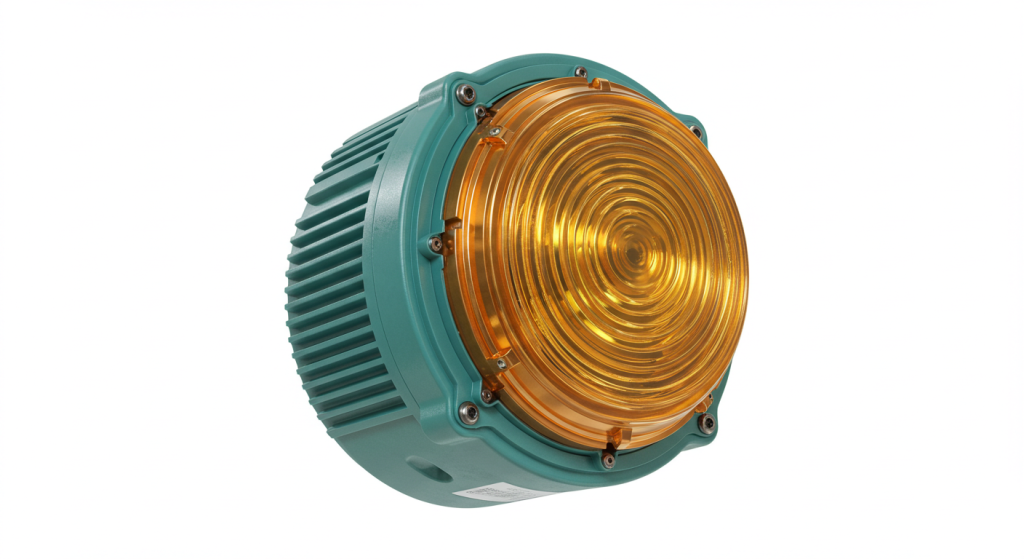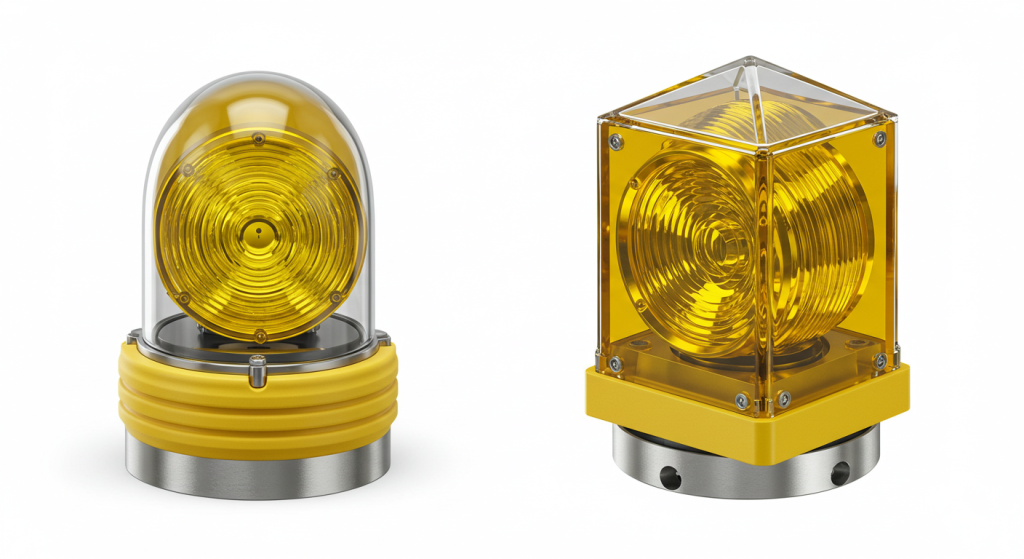The question, Where to buy airport landing lights, is a crucial one for airport operators, maintenance personnel, and aviation enthusiasts alike. These lights are not mere fixtures; they are vital components of airport safety and operational efficiency, enabling safe aircraft takeoffs and landings, especially during nighttime or adverse weather conditions. The beacon of guidance, often envisioned as the Light of Airport Lighthouse, is not just a single light, but an interconnected system of runway, taxiway, and approach lighting that ensures a pilot’s safe journey to and from the runway. This article will provide a comprehensive guide on where to source these essential airport lighting systems, explore the costs involved, understand their various types, and address critical safety questions related to their use.

The Crucial Role of Airport Landing Lights
Airport lighting systems are complex and meticulously designed to provide clear visual guidance to pilots in a variety of operating conditions. Each light serves a purpose, contributing to the overall safety and flow of air traffic. A key element to this discussion is, What is High Intensity Runway Lights? These specialized lights are paramount during periods of low visibility, significantly enhancing a pilot’s ability to perceive the runway and execute safe landing maneuvers.
Diving Deep into Airport Lighting Types
To better understand the search for reliable sources of airport landing lights, it’s essential to delve into the different types of lights and their functionalities:
- Runway Edge Lights: These lights are usually white and are strategically placed to define the runway’s boundaries. In the last 2,000 feet, they transition to yellow, alerting pilots to the approaching runway end.
- Runway Centerline Lights: These are embedded into the runway surface itself, providing directional guidance along the runway’s center. The color of these lights changes, becoming alternating red and white, and eventually solid red to signal an approaching runway end.
- Taxiway Edge Lights: The edges of the taxiways are marked with blue lights, ensuring that aircraft move efficiently between runways and terminals.
- Approach Lighting Systems (ALS): Located at the approach end of the runway, ALS lights assist pilots with visual alignment during approach, especially in low-visibility conditions.
- Threshold Lights: These green lights mark the beginning of the usable runway and let a pilot know the correct area to begin their landing approach.
- Touchdown Zone Lights (TDZL): Located in the touchdown zone, TDZL enhances a pilot’s awareness of the optimum landing area.
- Precision Approach Path Indicator (PAPI): PAPI lights use a combination of red and white colors to indicate whether the aircraft is on the correct glide path, too high or too low.
- Obstruction Lights: Red lights installed on tall structures that are near airports to warn pilots of potential hazards.

The Importance of the Light of Airport Lighthouse
When we envision the Light of Airport Lighthouse, we are, in reality, imagining the entire integrated system of airport lighting that provides vital directional guidance to pilots. These lights, as a whole, form a reliable and clear visual pathway, essential for a successful and safe approach and landing. The Light of Airport Lighthouse is not just about illuminating the runway; it’s about ensuring the comprehensive visual safety of the aircraft.
A key piece of this lighting system is What is High Intensity Runway Lights and the role these play in safe operations. When there is poor visibility, these lights cut through the inclement weather and allow the pilots to safely guide their planes to the runway.
Navigating the Marketplace: Where to Buy Airport Landing Lights
Having established the different types of airport lighting systems and their importance, let’s look at the different avenues available to acquire these critical components. The process of procuring these lights must involve careful consideration of the standards and certification of the products. When considering, Where to buy airport landing lights, various sources should be evaluated.
Direct from the Manufacturer and Other Specialized Suppliers
Procuring lights directly from the manufacturers may allow for better pricing and a higher level of customization, however, usually, these require large purchases and may not be a good solution for smaller operations.
- Authorized Distributors: These sources are often a reliable bridge between manufacturers and end-users. While they may come with slightly higher prices to cover the cost of operation, their selection is wider and access to support is easier.
- Online Marketplaces: Certain specialized platforms offer a variety of aerospace and airport supplies. These markets provide an easy way to compare products and costs. Be sure to always perform due diligence before making a purchase from a new source.
Critical Factors to Consider When Making a Purchase
Before deciding to purchase any airport landing lights, several key factors need to be evaluated:
- Certifications and Standards: The lights should meet the internationally recognized standards set by the FAA (Federal Aviation Administration) and the ICAO (International Civil Aviation Organization), which is vital.
- Quality and Durability: Airport lights must withstand the extremes of the environment, such as temperature fluctuations, jet blasts, rain, and snow.
- Energy Efficiency: LED lighting is considered the industry standard due to its longevity and the ability to conserve energy.
- Warranty and Customer Service: A supplier should always offer a sufficient warranty and quality technical support to back the product.
The Continued Importance of the Light of Airport Lighthouse
Once again, the importance of the Light of Airport Lighthouse, while not a literal lighthouse, is a useful conceptual idea to understand how airport lights function together to provide visual clarity. This concept showcases the interconnectedness of all the components to provide pilots with the information needed to make safe approaches and landings. The lights should always adhere to the highest quality standards and should be obtained from reliable sources.
What is High Intensity Runway Lights is a question that highlights the necessity of visibility, and these lights are a crucial part of maintaining that visibility and keeping operations flowing safely. The consistency of output and quality of these lights are vital to a safe and consistent landing and take-off.
A Look at Used Runway Lights for Sale
The concept of purchasing Used runway lights for sale can be an appealing option, especially when budgets are stretched. While there are some potential cost savings, it’s essential to consider some details when making the decision:
- Quality Assessment: Used lights should be rigorously assessed, as their lifespan might be limited.
- Maintenance Log: Knowing the maintenance history of used lights can be useful to determine future maintenance costs and performance.
- Warranties and Current Certifications: Used lights may not come with a warranty or current certifications, making them a riskier option.
While purchasing used lights may be a viable option for smaller private airports or training facilities, it is generally not recommended for large, commercial airports due to the critical nature of the lighting systems.

The Price of Safety: How Much Do Airport Runway Lights Cost?
How much do airport runway lights cost? This is a complex question with no single answer. A range of factors influences the cost of these lighting systems. The cost is not just the upfront purchase price; it’s also the long-term operating and maintenance expenses that should be taken into account.
Here are some of the cost influencing factors:
The notion of the Light of Airport Lighthouse highlights the concept that the costs of a lighting system depend not on just a single light, but the entire system of required components and the costs associated with these components.
What is High Intensity Runway Lights is essential to consider when looking at the cost factors. These lights are designed for low visibility and tend to be more expensive due to the specialized technology they use.
Estimating the Costs
Providing exact figures can be difficult, but here are some estimated cost ranges:
| Type of Lighting | Estimated Cost Range (Per Unit) | Notes |
|---|---|---|
| Runway Edge Lights | $500 – $2,000 | Cost depends on intensity, features, and the materials |
| Runway Centerline Lights | $800 – $3,000 | Flush mounted lights tend to be more expensive |
| Taxiway Lights | $300 – $1,000 | Generally more affordable than runway lights |
| Approach Lighting Systems (ALS) | $5,000 – $50,000 (per system) | Costs depend on the system’s size and complexity |
| High Intensity Runway Lights | $1,500 – $4,000 | These are more costly due to specialized tech and intensity |
| PAPI Lights | $3,000-$15,000 (per unit) | The model type will determine the actual cost |
These cost ranges are approximations, and any actual costs must be confirmed directly with the lighting suppliers.
While the initial costs can be substantial, the potential gains in safety and efficiency make it a worthy long-term investment.
Airport Landing Lights: What are they Called?
What are the airport landing lights called? This question frequently comes up among people who are unfamiliar with aviation. The phrase “airport landing lights” encompasses the total of different lights that are required on a runway, each with different names and functions.
The common light types include:
- Runway Edge Lights: These lights, usually white, are used to mark the edge of the runway.
- Runway Centerline Lights: These are located in the center of the runway to provide directional guidance for pilots.
- Taxiway Edge Lights: The blue lights are used to outline the taxiways for pilots.
- Threshold Lights: Green lights show a pilot where the start of the runway is.
- Approach Lighting System (ALS): A series of lights that help pilots visually align with the runway during the approach.
- PAPI Lights: These utilize color signals to help pilots maintain the correct glide path.
- Touchdown Zone Lights (TDZL): These lights are positioned to mark the optimum touchdown zone for pilots to land.
The whole system of lights, working together, form the overall lighting network for the airport and contributes significantly to safety during operations. The concept of the Light of Airport Lighthouse is a reference to the overall integrated light system that provides pilots with the clarity they need to operate safely.
Also, it’s essential to understand What is High Intensity Runway Lights as these lights are designed to provide the pilot with visibility during periods of low visibility and are an important part of the overall system.
Functions of Each Light Type
It’s important to not just know their names, but to also understand the functionality of each individual light:
- Runway edge lights define the edge of the landing area.
- Runway centerline lights help pilots stay correctly aligned.
- Taxiway lights keep planes on the correct path as they move along the taxiways.
- Threshold lights alert the pilots that they are approaching the beginning of the runway.
- Approach lights allow pilots to align with the runway as they descend.
- PAPI lights assist pilots to maintain the correct approach vertical angle.
- Touchdown zone lights mark the best possible area for the aircraft to land.
The system is designed to minimize accidents and promote efficient air traffic operations.
Is it Legal to Land Without Runway Lights?
Is it legal to land without runway lights? In general, landing without runway lights is highly discouraged and often not legal, except in very particular circumstances such as emergency situations. The practice of landing without runway lights is inherently dangerous and should only be considered as an absolute last resort.
Rules and Restrictions
Most governing aviation bodies, such as the FAA and ICAO, have clearly established guidelines and rules regarding airport lighting systems. It is generally a rule that all night landings require that the runway lights are operating. These are often not just recommendations but actual legal requirements.
Emergency Scenarios
There may be particular emergency scenarios where landing without runway lights is permitted. In these cases, the pilots are required to rely on their skill and training and to do everything they can to guarantee a safe operation. This should never be the first option.
Uncontrolled Airfields
Some flexibility may exist at smaller non-controlled airfields, but the vast majority of commercial airport traffic takes place at controlled airfields with proper lighting and is therefore regulated.
Risks and Safety
When the runway lights are not functional, the pilot’s ability to correctly assess alignment and altitude is severely reduced, especially during night landings. The runway lighting systems provide pilots with the vital visual clues required for a safe landing.
The directional guidance provided by the Light of Airport Lighthouse is crucial, particularly when visibility is limited. What is High Intensity Runway Lights ensures the pilot has optimal viewing capability and this ability is totally lost without the lighting system.
Legal Aspects
Landing without runway lights may cause legal complications, including suspension of licenses or other penalties. Compliance with all regulations is essential for ensuring safe and secure operations and for avoiding legal implications.
The Extent of Runway Lighting: What Runway Lights Last 3000 Feet?
What runway lights last 3000 feet? While runway edge lights run the whole length of the runway, it’s the centerline lights that are used to show the pilot that they are within the last 3000 feet of the runway.
Here is a breakdown of this lighting setup:
Runway Edge Lights
Runway edge lights generally run the full length of the runway, marking the boundary, but these lights do not change color to provide information about runway distance. These lights are generally white and will change to yellow for the last 2000 feet to indicate the runway end.
Runway Centerline Lights
These centerline lights are embedded into the runway and they change color to give the pilot information about the distance remaining. They will transition into alternating red and white patterns for the last 3000 feet of the runway before becoming solid red for the last 1000 feet. This allows the pilot to keep track of the runway location and the remaining distance.
Importance of Color Changes
The color changes are vitally important for pilots to gauge their position as they approach the runway touchdown point. This visual information provides the pilot with clear feedback about their location.
The entire system of lights, including the guidance provided by the Light of Airport Lighthouse and the functionality of What is High Intensity Runway Lights, forms a complex but very important system that is designed to provide the most safe and efficient operation.
Why the Color Transition is Important
The changes in color provide important visual cues:
- White edge lights mark the runway boundaries.
- Yellow edge lights mark the end of the runway.
- White centerline lights provide guidance, and then
- Alternating Red and White centerline lights mark the end of the runway.
- Red Centerline lights indicate minimal runway remaining.
In Conclusion
Where to buy airport landing lights is a critical consideration for all individuals involved in the operation and maintenance of airport facilities. A thorough search for reliable and quality lighting sources is vital. This article has explored many of the important aspects of this topic, from the different types of lights to the costs involved and the relevant safety and legal issues.
The concept of the Light of Airport Lighthouse is not just about a single light; it’s about the entire airport lighting network working together as an integrated system. A comprehensive approach is required to provide the required safety and efficiency for airport operations. It is equally vital to understand What is High Intensity Runway Lights, as they are crucial to maintaining the highest standards of visibility, especially in low visibility conditions.
By considering all the points mentioned in this discussion, stakeholders can make informed decisions that will contribute to a safer and more efficient air travel system. When procuring lighting systems, whether looking for new ones or exploring the possibility of Used runway lights for sale, the highest priority should always be quality, regulatory compliance, and above all, safety.